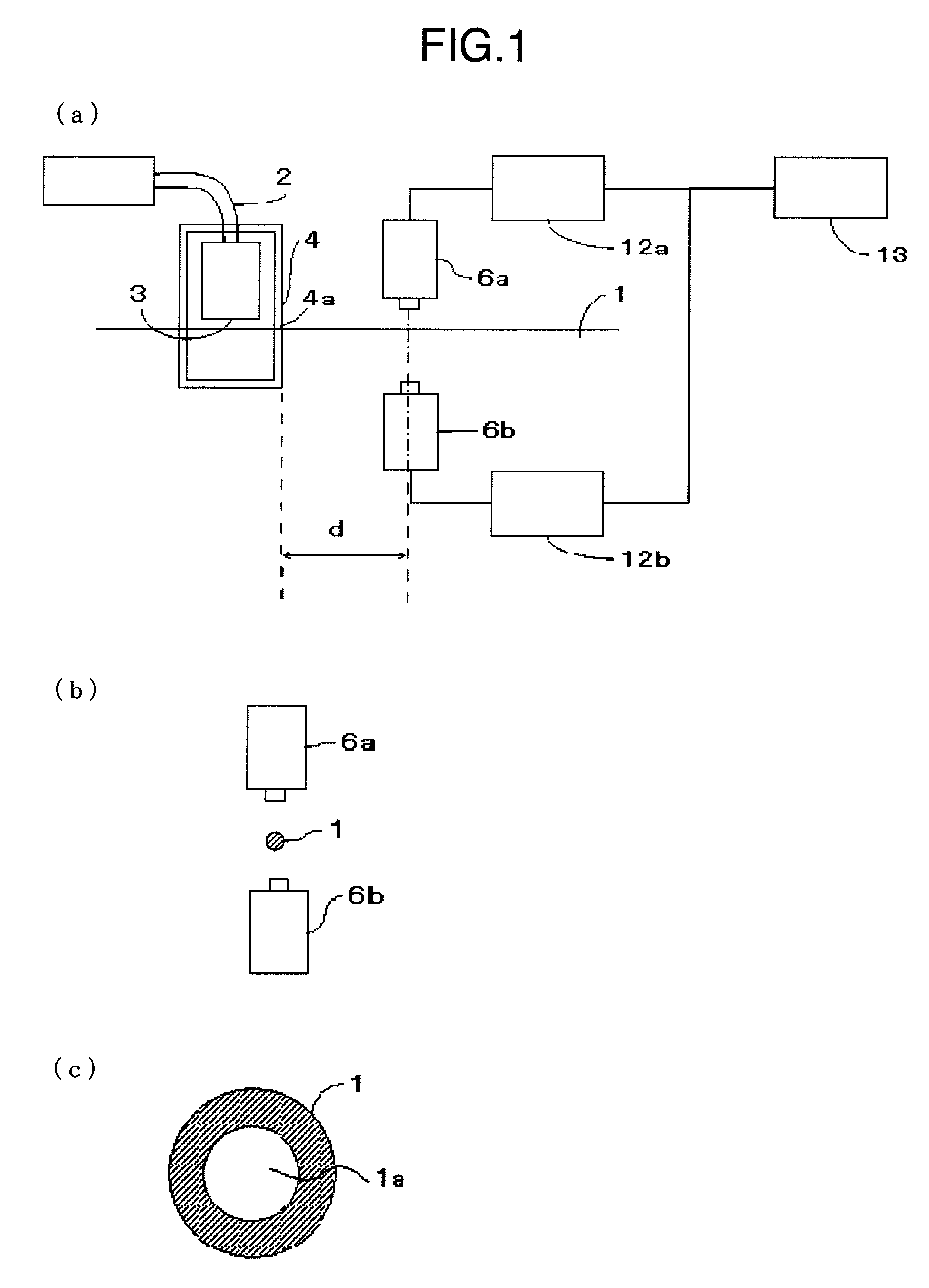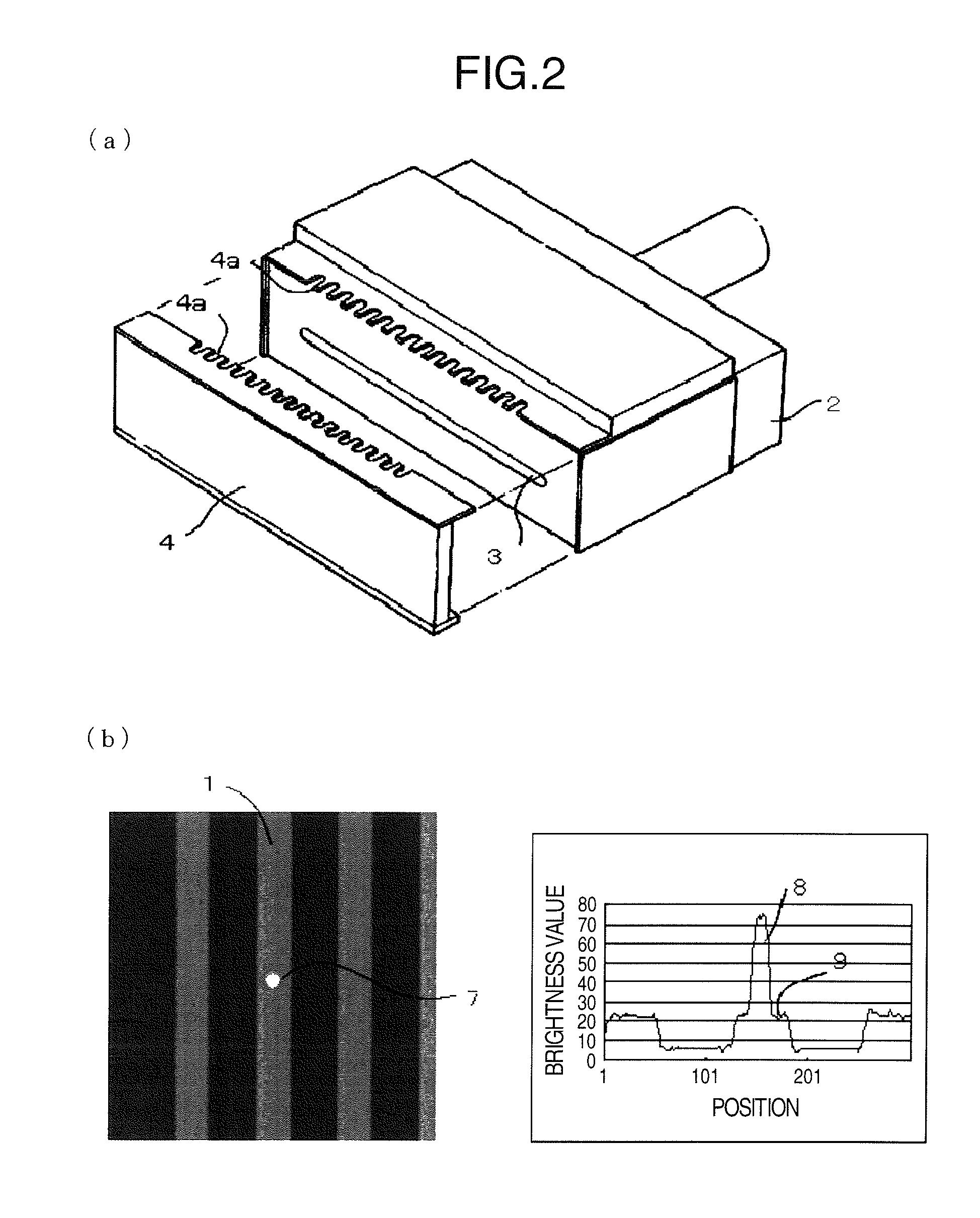Method for inspecting defect of hollow fiber porous membrane, defect inspection equipment and production method
a inspection equipment technology, applied in the field of hollow fiber porous membrane inspection methods, can solve the problems of inability to adapt and reduce yield, and achieve the effect of accurately measuring an internal defect of the target hollow fiber membrane, increasing the absolute quantity of light intensity, and preventing heat generation
- Summary
- Abstract
- Description
- Claims
- Application Information
AI Technical Summary
Benefits of technology
Problems solved by technology
Method used
Image
Examples
example 1
[0033]A spinning dope containing polysulfone (Udel P-3500 manufactured by SOLVAY) as the raw material and N-methylpyrrolidone as a solvent was injected, together with water of an internal liquid, in the form of a hollow fiber in the air and was then solidified in a coagulation bath, thereby producing a hollow fiber porous membrane using 16 spinning spindles at a line velocity of 20 m / min. Prior to being wound up after taken out of the coagulation bath and through a washing process, the hollow fiber porous membrane 1 (with outer diameter of 1.4 mm and inner diameter of 0.8 mm) was introduced into the irradiation chamber 4 (to serve as the through-hole 4a with a hole size of 1.8 mm opened at 1 mm intervals when the upper lid is closed) manufactured by SUS, the irradiation chamber including therein the line-type optical fiber illuminating device 2 (metal halide illuminating device: MLDS250 (250 W) manufactured by Iwasaki Electric Co., Ltd.) and a line-type light guide: GF8-1L1500 R-S10...
examples 2 to 6
[0035]The defect targeted at in the method of the present invention is a non-through defect (a cavity enclosed in the hollow fiber porous membrane) that will be destroyed by a practical operating pressure. However, it is difficult to experimentally form a non-through defect and therefore a model experiment was conducted by artificially opening a pinhole in the hollow fiber porous membrane which was spun in Example 1. The same defect detection device as that of Example 1 was used. The detection condition of each example is shown in Table 1.
[0036]A hollow fiber membrane having a pinhole opened therein was introduced into the defect detection device and was then imaged with the imaging distance d of the line-sensor camera 6a in a range of 0.2 to 5.6 mm, and then the output values of the line-sensor camera were digitized into 0 to 511 levels, which were then image-processed to obtain a brightness profile. A ratio of the output values of an un-through pinhole and an artificially opened t...
PUM
| Property | Measurement | Unit |
|---|---|---|
| thickness | aaaaa | aaaaa |
| diameter | aaaaa | aaaaa |
| thickness | aaaaa | aaaaa |
Abstract
Description
Claims
Application Information
 Login to View More
Login to View More - R&D
- Intellectual Property
- Life Sciences
- Materials
- Tech Scout
- Unparalleled Data Quality
- Higher Quality Content
- 60% Fewer Hallucinations
Browse by: Latest US Patents, China's latest patents, Technical Efficacy Thesaurus, Application Domain, Technology Topic, Popular Technical Reports.
© 2025 PatSnap. All rights reserved.Legal|Privacy policy|Modern Slavery Act Transparency Statement|Sitemap|About US| Contact US: help@patsnap.com



